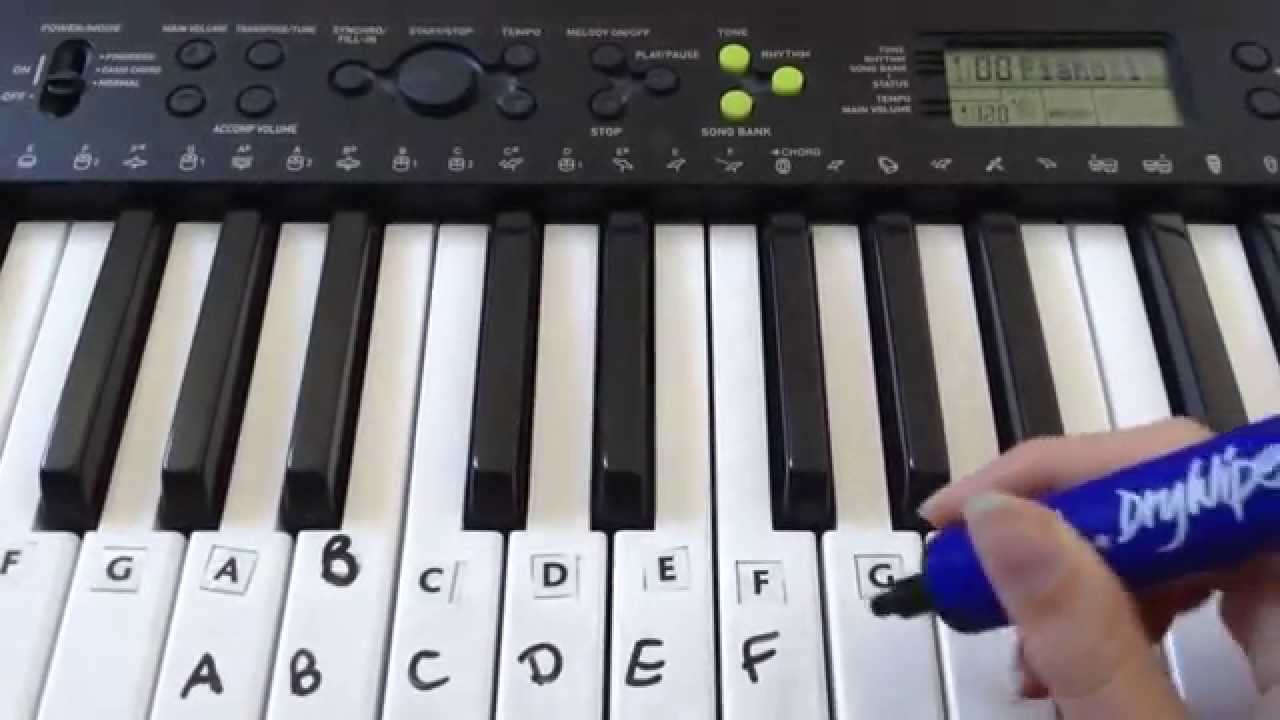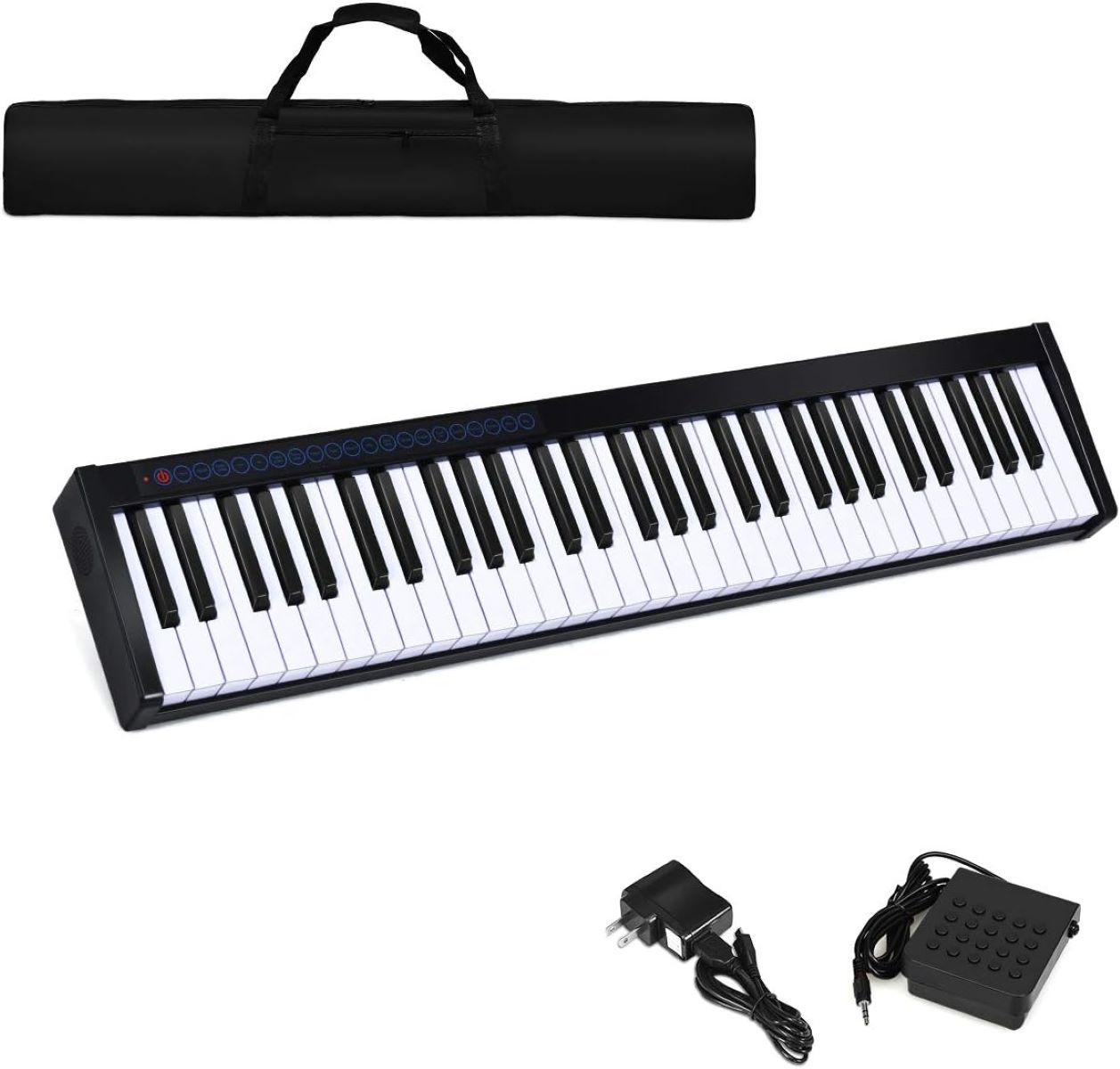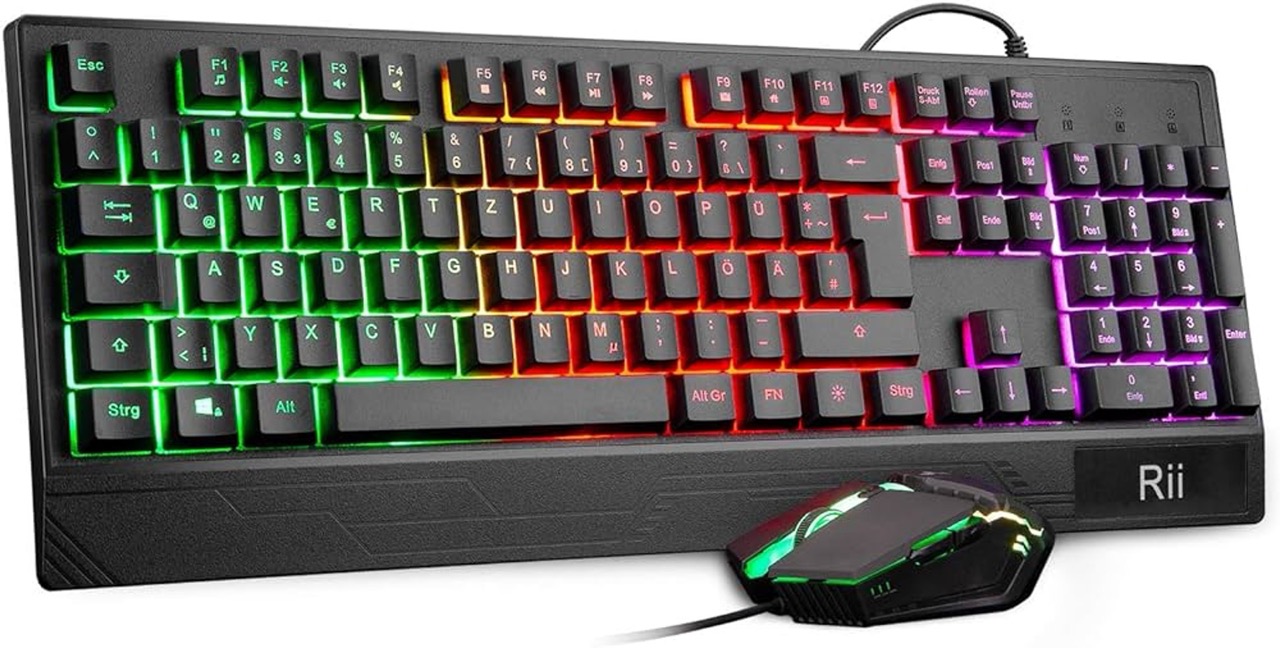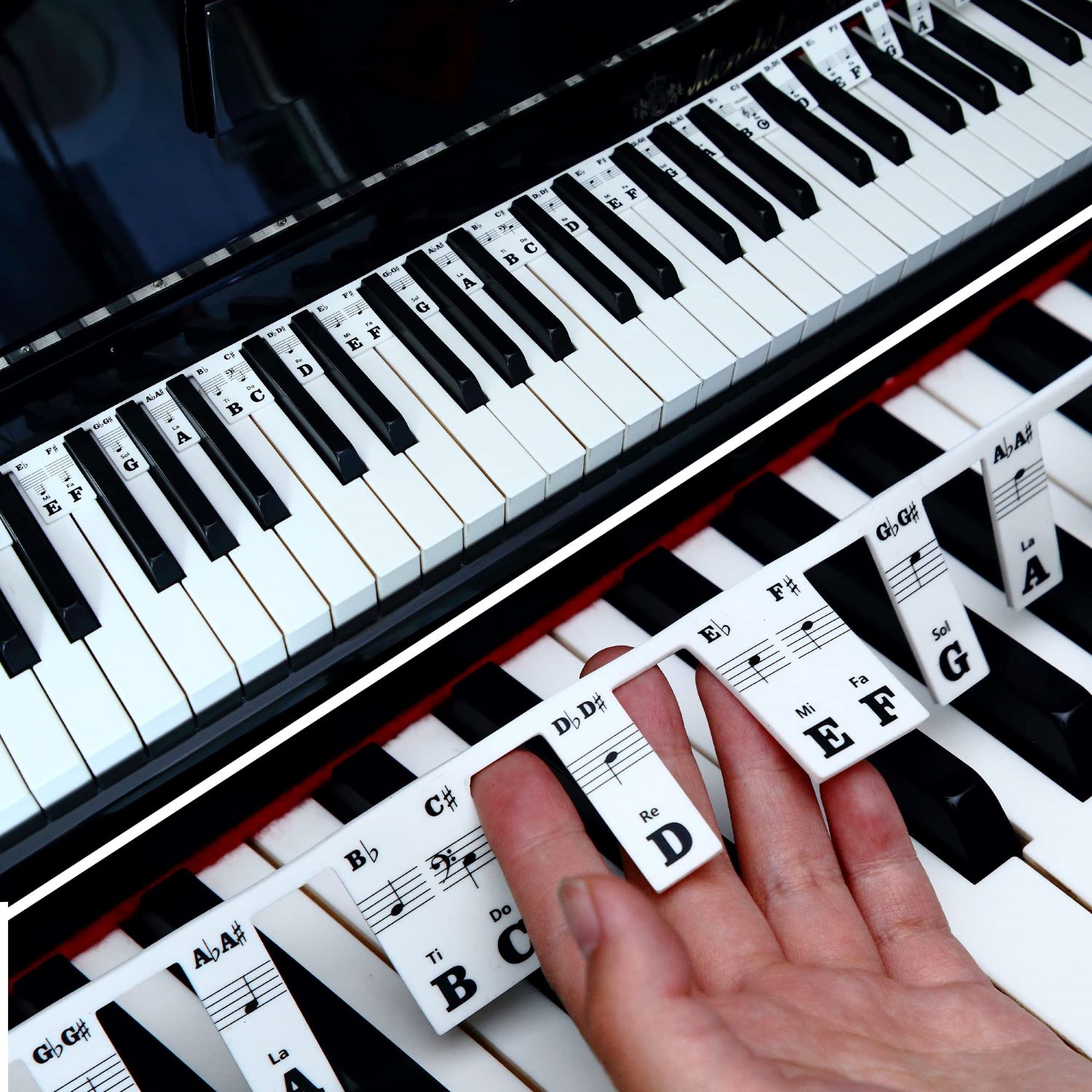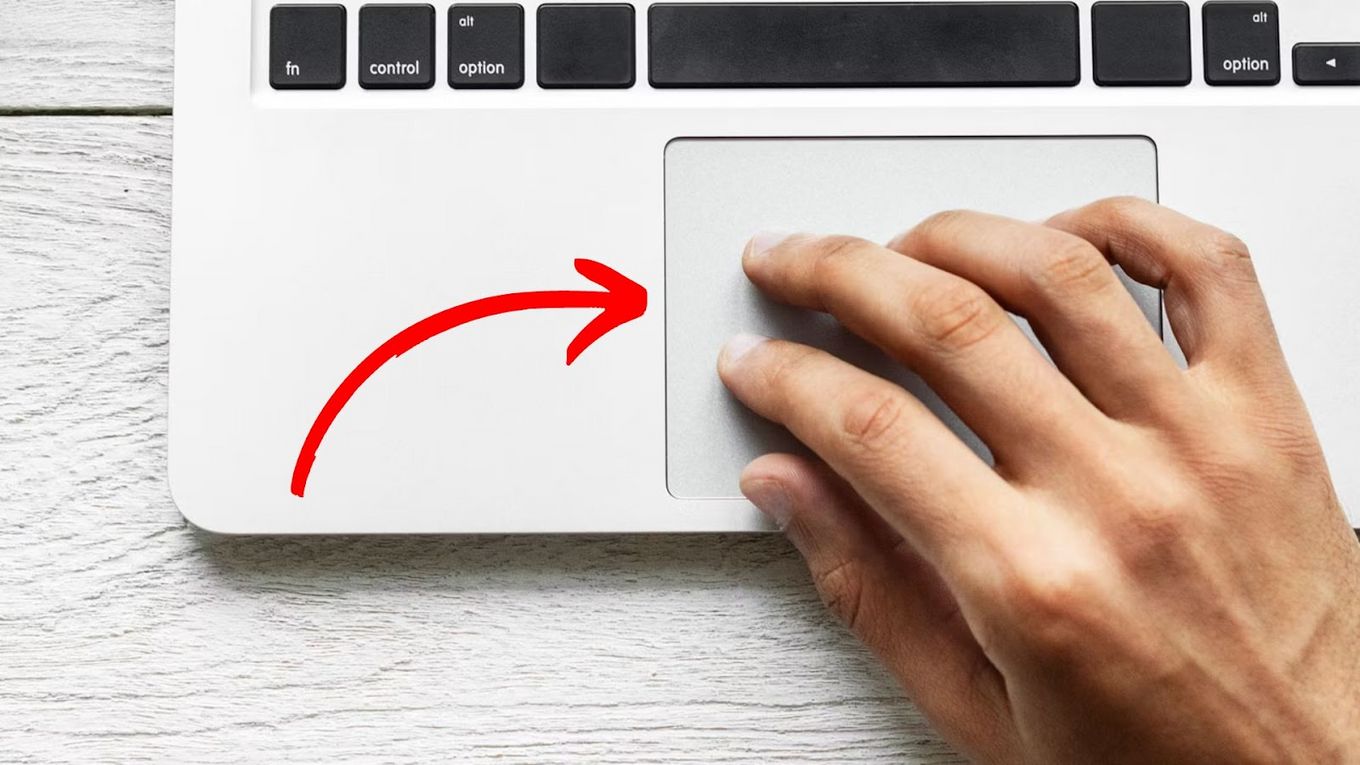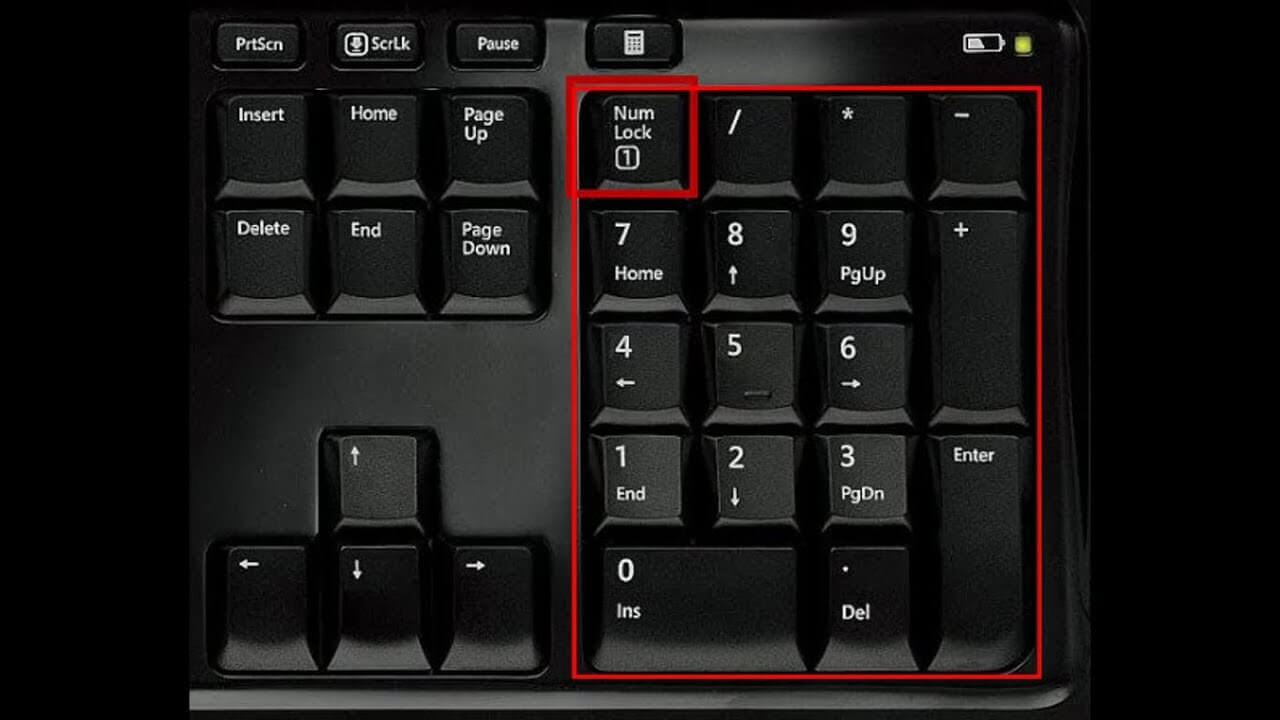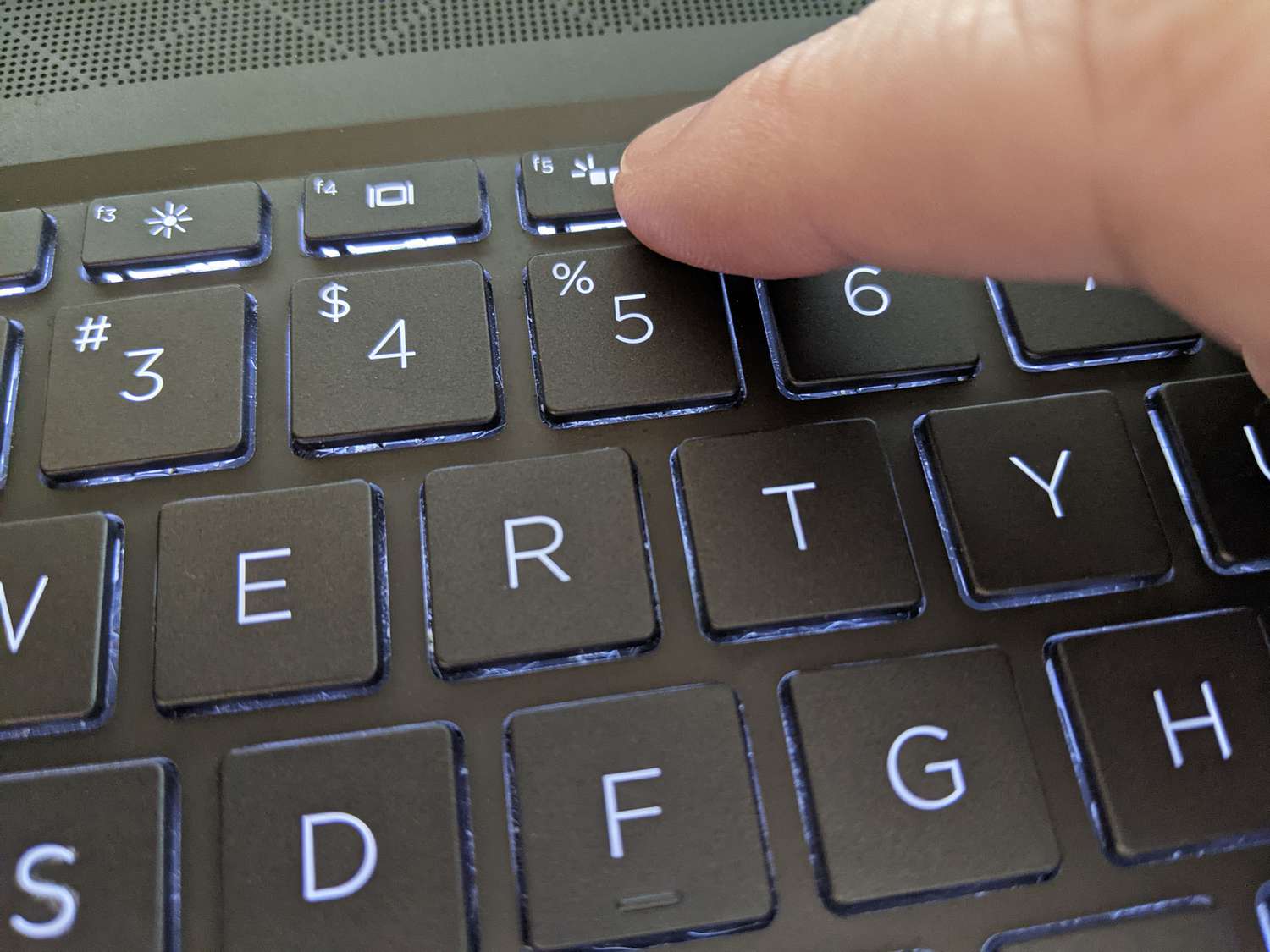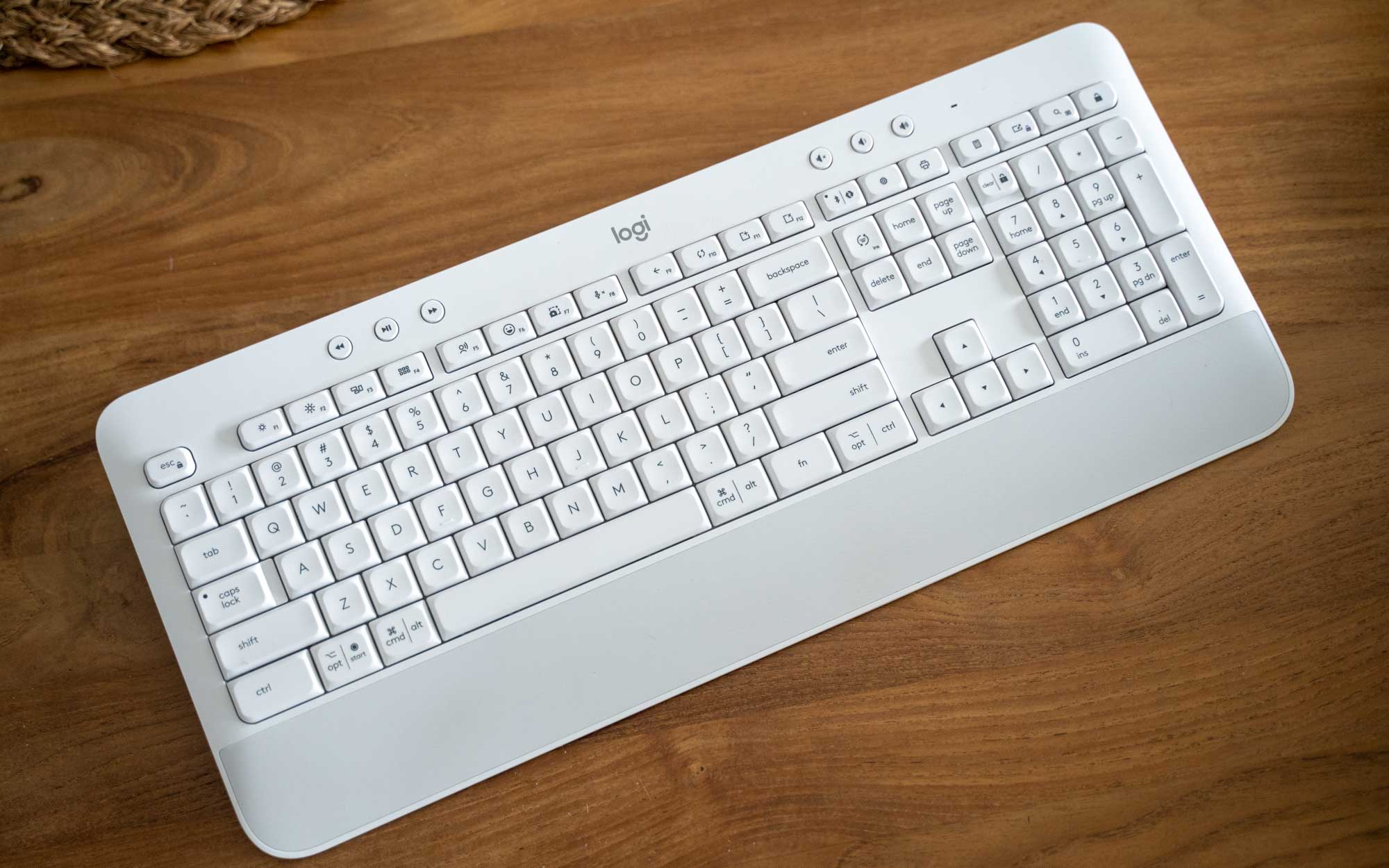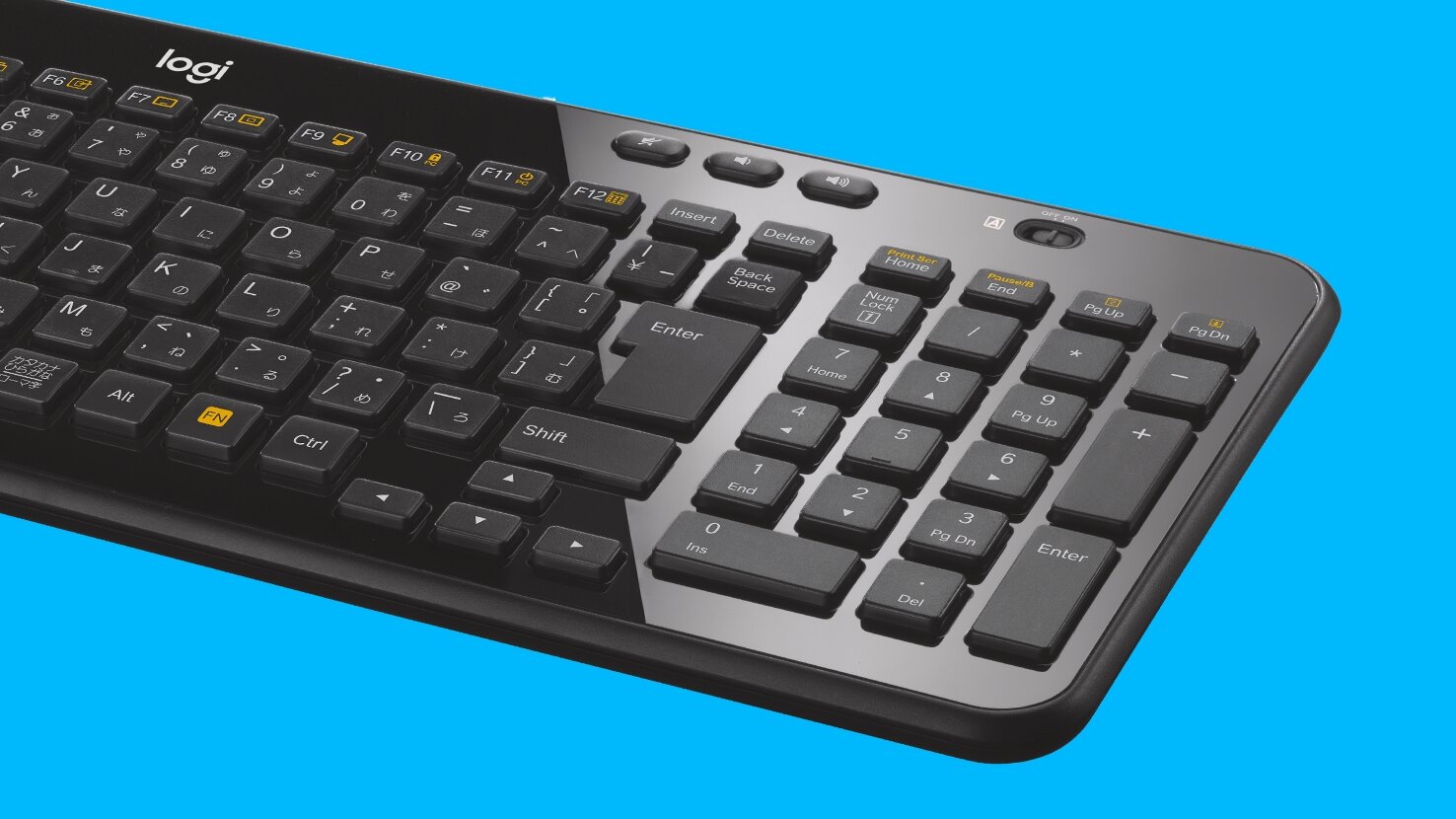Introduction
The keyboard is one of the most essential tools for both casual computer users and professionals alike. Whether you are browsing the internet, typing up a document, or playing your favorite video game, having a well-labeled keyboard can greatly enhance your productivity and overall user experience. Labeling keyboard keys ensures that you can quickly and accurately access the specific keys you need without any confusion. Plus, it adds a touch of personalization to your keyboard setup.
In this article, we will explore the importance of labeling keyboard keys and discuss various methods you can use to achieve this. We’ll provide in-depth explanations of different labeling techniques, including using keycap labels, keyboard stickers, keycap pullers, replacement keycaps, and keycap customization software. We’ll also offer tips to help you choose the right method for your needs and provide guidance on how to effectively apply labels to your keyboard keys.
Whether you are a writer, gamer, programmer, or anyone who spends a significant amount of time typing, having a labeled keyboard will make your life much easier. No more peering at the keyboard trying to remember which key does what. With clear and visible labels, you can focus on your work and navigate your keyboard with ease.
So, let’s dive into the world of labeling keyboard keys and discover the options that will help you take your keyboard experience to the next level!
Why Labeling Keyboard Keys is Important
Labeling keyboard keys might seem like a small detail, but it can have a significant impact on your typing efficiency and overall user experience. Here are a few key reasons why labeling keyboard keys is important:
- Improved Accuracy: Having labeled keys on your keyboard allows for faster and more accurate typing. By easily identifying the keys, you can naturally position your fingers and press the correct keys without hesitation or second-guessing.
- Enhanced Productivity: When you’re in the zone, the last thing you want is to disrupt your workflow by searching for the right key. By labeling keyboard keys, you can minimize distractions and maintain a constant typing rhythm, thereby boosting your productivity.
- Convenient Function Access: Keyboards today come with various function keys, multimedia keys, and hotkeys that provide quick access to specific features. By labeling these keys, you can effortlessly access functions like volume control, screen brightness adjustments, and media playback, without having to remember complex keyboard shortcuts.
- Visual Appeal: Let’s face it, a labeled keyboard looks more appealing than a plain one. With various label designs and customization options available, you can add a personal touch to your keyboard and make it visually appealing.
- Accessibility: For individuals with visual impairments or those who struggle with memorizing keystrokes, labeling keyboard keys is crucial for accessibility. Clear and visible labels allow everyone to effortlessly use a keyboard, regardless of their skill level or specific needs.
As you can see, labeling keyboard keys goes beyond mere aesthetics. It improves accuracy, increases productivity, provides convenient access to functions, enhances visual appeal, and ensures accessibility for all users. So, whether you’re a seasoned typist or a beginner, labeling your keyboard keys is a small investment that can yield significant benefits in your everyday computer usage.
Different Methods of Labeling Keyboard Keys
When it comes to labeling keyboard keys, there are several methods you can choose from. Each method offers its own advantages and suits different preferences and requirements. Let’s explore some of the most common methods of labeling keyboard keys:
- Using Keycap Labels: Keycap labels are small stickers designed to fit on top of individual keycaps. These labels typically have the corresponding characters or symbols printed on them. They are easy to apply and remove, allowing you to customize your keyboard without permanently altering the keycaps. Keycap labels come in various designs, colors, and font styles, giving you the flexibility to match your personal taste.
- Using Keyboard Stickers: Keyboard stickers are larger adhesives that cover entire sections of your keyboard. These stickers usually have pre-printed labels for different languages, layouts, or functions. They are an ideal solution if you need to label multiple keys at once or if you frequently switch between different languages or layouts. Keyboard stickers are durable and provide a more permanent labeling solution.
- Using Keycap Pullers and Replacement Keycaps: For a more professional and customizable labeling option, you can consider using keycap pullers and replacement keycaps. Keycap pullers allow you to remove your existing keycaps and replace them with new ones that have pre-labeled characters or symbols. This method provides a clean and professional look, and allows for more advanced customization options, such as different keycap materials, colors, and designs.
- Using Keycap Customization Software: If you have a mechanical keyboard with programmable RGB backlighting, you can label your keys using keycap customization software. This software allows you to assign specific colors or backlight patterns to different keys, effectively labeling them visually. While this method doesn’t physically apply labels to the keycaps, it provides a dynamic and customizable labeling solution.
Each labeling method has its pros and cons, so it’s important to consider factors such as personal preferences, ease of application, durability, and level of customization required. By choosing the right labeling method for your needs, you can enhance your typing experience and make your keyboard truly your own.
Method 1: Using Keycap Labels
One common method of labeling keyboard keys is by using keycap labels. Keycap labels are small stickers specifically designed to fit on top of individual keycaps. They typically have the corresponding characters or symbols printed on them, allowing for quick and easy identification of each key.
Using keycap labels offers several advantages. First and foremost, they are incredibly easy to apply. All you need to do is peel off the sticker and carefully place it on top of the desired keycap. Most keycap labels are made with adhesive material that ensures a secure bond, preventing them from peeling or shifting during regular typing.
Another benefit of keycap labels is their versatility. They come in various designs, colors, and font styles, allowing you to choose the best fit for your keyboard and personal preferences. Whether you prefer a minimalist look or a vibrant and colorful design, there are keycap labels to suit every taste.
Keycap labels are also a non-permanent solution, which means you can easily remove them without causing any damage to your keycaps. This allows you to experiment with different labeling options or switch back to a clean and unlabeled keyboard whenever you desire.
It’s worth noting that keycap labels are more suitable for keyboards with flat keycaps. For keyboards with sculpted or contoured keycaps, the labels may not adhere properly or sit flush with the surface. In such cases, alternative labeling methods like keyboard stickers or keycap customization software may be more appropriate.
To ensure the longevity of your keycap labels, it’s important to clean and maintain your keyboard regularly. Avoid using harsh cleaning agents that may cause the labels to fade or peel off. Instead, use a soft, lint-free cloth and mild cleaning solutions to gently wipe the keyboard and remove any dust or debris.
In summary, using keycap labels is a simple yet effective method of labeling your keyboard keys. They offer ease of application, versatility in design, and the ability to customize your keyboard to your liking. Whether you need to label a few specific keys or the entire keyboard, keycap labels provide a convenient solution that enhances your typing experience without permanently altering your keycaps.
Method 2: Using Keyboard Stickers
Another popular method of labeling keyboard keys is by using keyboard stickers. Keyboard stickers are larger adhesives that cover entire sections of your keyboard, and they usually have pre-printed labels for different languages, layouts, or functions.
Using keyboard stickers offers a practical and comprehensive labeling solution, especially if you need to label multiple keys at once or frequently switch between different languages or layouts. These stickers are designed to be durable and provide a more permanent labeling option compared to keycap labels.
One of the advantages of using keyboard stickers is their versatility. They come in various layouts and languages, making it easy to find stickers that match your specific keyboard or typing needs. Whether you need stickers for a QWERTY layout, a foreign language, or specialized function keys, there are stickers available to meet your requirements.
The durability of keyboard stickers is another appealing feature. These stickers are designed to withstand regular typing and can handle the wear and tear associated with daily use. They are made with high-quality materials that provide a long-lasting labeling solution without fading or peeling off easily.
Additionally, keyboard stickers are often designed with a clear and legible font, ensuring that the labels are easily readable. This is particularly important for individuals with visual impairments or those who prefer a highly visible labeling option.
One thing to keep in mind when using keyboard stickers is to choose a sticker set that matches your keyboard layout precisely. Each keyboard layout may have different key sizes and shapes, so it’s important to select stickers that align with the layout of your keyboard for accurate labeling.
To apply keyboard stickers, ensure that your keyboard is clean and free from dust or debris. Carefully peel off each sticker and align it with the corresponding keycap. Press down firmly on the sticker to ensure a secure bond with the keycap. Avoid using excessive force that may cause the sticker to tear or shift.
In summary, using keyboard stickers is an effective method of labeling your keyboard keys, especially if you need a comprehensive labeling solution for various languages or layouts. They offer versatility, durability, and legibility, making them a popular choice among users who require easily accessible and long-lasting labels on their keyboards.
Method 3: Using Keycap Pullers and Replacement Keycaps
For a more professional and customizable labeling option, you can consider using keycap pullers and replacement keycaps. This method allows you to remove your existing keycaps and replace them with new ones that have pre-labeled characters or symbols.
Keycap pullers are small tools designed to safely remove keycaps from a keyboard. They come in various designs such as wire or ring-style pullers and are easy to use. By using a keycap puller, you can carefully lift the keycaps without damaging them or the keyboard.
Once you have removed the desired keycaps, you can replace them with new ones that have pre-labeled characters or symbols. Replacement keycaps are available in a wide range of options, including different font styles, colors, and designs. This allows you to customize your keyboard to your liking and create a unique look.
Using keycap pullers and replacement keycaps provides a clean and professional labeling solution. The labels are permanently engraved or printed on the keycaps, ensuring long-lasting durability. This method is particularly suitable for individuals who prefer a more tactile labeling experience or have keyboards with sculpted or contoured keycaps.
An advantage of this method is the extensive customization options it offers. You can choose replacement keycaps with different materials, such as ABS or PBT plastics, to achieve the desired look and feel. Additionally, some keycap sets come with extra keycaps for specialized functions or alternative layouts, allowing you to further personalize your keyboard.
It’s important to note that replacing keycaps requires some knowledge of keyboard mechanics and keycap compatibility. Different keyboards may have different keycap sizes, styles, and mounting methods. Before purchasing replacement keycaps, ensure that they are compatible with your specific keyboard model to avoid any fitting issues or compatibility conflicts.
To apply replacement keycaps, use the keycap puller to remove the old keycaps. Take care not to apply excessive force while removing the keycaps to prevent any damage to the key switches. Then, align the replacement keycaps with the corresponding switches and firmly press them down until they snap into place.
In summary, using keycap pullers and replacement keycaps offers a professional and customizable labeling solution for your keyboard. It allows for extensive customization options, durability, and a tactile labeling experience. If you’re looking to personalize your keyboard and enhance your typing experience, this method provides a clean and visually appealing solution.
Method 4: Using Keycap Customization Software
If you have a mechanical keyboard with programmable RGB backlighting, you can label your keys using keycap customization software. This method allows you to assign specific colors or backlight patterns to different keys, effectively labeling them visually.
Keycap customization software provides a dynamic and customizable labeling solution that doesn’t require physically applying labels to the keycaps. Instead, you can leverage the RGB lighting capabilities of your keyboard to create visually distinct labels for each key.
One of the advantages of using keycap customization software is the flexibility it offers in terms of labeling options. You can choose from a wide range of colors to represent different key functions or create custom lighting profiles to suit your preferences. This allows for a personalized and visually pleasing keyboard setup.
Additionally, keycap customization software allows you to easily switch between different labeling schemes or personalize the labels for different applications or games. You can create profiles that automatically activate specific backlighting configurations whenever you open a particular program or game, making it easy to identify the relevant keys at a glance.
It’s worth noting that keycap customization software is typically specific to certain mechanical keyboard models or brands. Therefore, it’s important to ensure compatibility before choosing this method. Check if your keyboard is supported by the software provided by the manufacturer or explore third-party software options that are compatible with your keyboard model.
To utilize keycap customization software, you may need to download and install the software provided by your keyboard manufacturer or reputable third-party developers. Once installed, you can access the software’s interface and explore the different customization options available. From there, you can assign specific colors or lighting effects to each key, effectively labeling them in a visually appealing and customizable way.
In summary, using keycap customization software provides a unique and visually appealing method of labeling your keyboard keys. By leveraging the RGB lighting capabilities of your mechanical keyboard, you can create personalized and dynamic labels without physically modifying the keycaps. This method offers flexibility, customization options, and the ability to create visually stunning keyboard setups that enhance your typing and gaming experience.
Choosing the Right Method for Your Needs
With a variety of methods available for labeling keyboard keys, it’s essential to consider your specific needs and preferences when choosing the right method. Here are some factors to consider:
- Keyboard Type: The type of keyboard you have may influence your choice. Keycap labels and keyboard stickers are versatile options that can be used on most keyboards, while keycap pullers and replacement keycaps are more suitable for mechanical keyboards.
- Level of Customization: If you prefer a personalized look and feel for your keyboard, options like keycap pullers, replacement keycaps, and keycap customization software offer extensive customization possibilities.
- Durability: Consider the durability of the labeling method you choose. Keycap labels and keyboard stickers can withstand regular use, but replacement keycaps often offer long-lasting durability.
- Visual Appeal: If aesthetics are important to you, explore different labeling options in terms of design, colors, fonts, and backlighting effects. Keycap customization software offers visually appealing customization options for keyboards with programmable RGB lighting.
- Language or Layout Requirements: If you need to label keys for specific languages or layouts, keyboard stickers and replacement keycaps are more suitable options as they provide pre-labeled keys for different layouts or languages.
- Budget: Consider your budget as different labeling methods vary in terms of cost. Keycap labels and keyboard stickers are generally more affordable options, while keycap pullers, replacement keycaps, or keyboards with customizable backlighting may require a higher investment.
Take the time to evaluate your requirements and assess which factors are most important to you. Consider the pros and cons of each method and how they align with your needs. It may also be helpful to read reviews or seek recommendations from other users who have utilized different labeling methods.
Remember, there is no one-size-fits-all solution when it comes to labeling keyboard keys. The right method is the one that suits your specific needs and enhances your typing experience. Whether you choose keycap labels, keyboard stickers, keycap pullers and replacement keycaps, or keycap customization software, embracing the labeling process will result in a more efficient and visually appealing keyboard setup.
Tips for Applying Labels on Keyboard Keys
Applying labels on keyboard keys, whether it’s keycap labels or keyboard stickers, requires careful attention to detail to ensure a clean and professional finish. Here are some tips to help you apply labels effectively:
- Clean the Keyboard: Before applying any labels, make sure to clean the keyboard thoroughly to remove any dust, dirt, or debris. Use a soft, lint-free cloth and gentle cleaning solutions to wipe down the keycaps. This will ensure a clean surface for the labels to adhere to.
- Precision Placement: Take your time to align the labels accurately on the keycaps. Carefully position each label, ensuring they are centered and aligned properly. This will enhance the overall aesthetic appeal and readability of the labeled keys.
- Apply Gentle Pressure: Press down firmly on each label to ensure a secure bond with the keycap. However, avoid using excessive force as it may cause the label to tear or shift from its position.
- Avoid Air Bubbles: When applying labels, be mindful of any air bubbles that may get trapped underneath. Smooth out the labels with your fingers, starting from the center and working your way towards the edges to eliminate any air bubbles or wrinkles.
- Allow for Proper Drying Time: If you are using adhesive keycap labels, allow sufficient drying time as specified by the manufacturer. This will ensure that the labels adhere properly and resist peeling or shifting during regular use.
- Regular Maintenance: To keep your labels in good condition, avoid using abrasive cleaning agents or solvents that may cause the labels to fade or peel off. Instead, use a soft, lint-free cloth and mild cleaning solutions to gently clean the labeled keys.
- Test Durability: Before committing to labeling the entire keyboard, test the durability of the labels on a few keycaps. This will allow you to check the adhesive strength and ensure that the labels can withstand regular typing and cleaning without any issues.
- Consider Keycap Customization Software: If you prefer a dynamic and customizable labeling option, explore keycap customization software. Take the time to familiarize yourself with the software’s functionality to effectively assign colors or lighting patterns to the labeled keys.
By following these tips, you can achieve a well-labeled keyboard with clear, legible, and long-lasting labels. Whether you’re using keycap labels or keyboard stickers, proper application ensures an enhanced typing experience and adds a personal touch to your keyboard setup.
Conclusion
In conclusion,
Labeling keyboard keys is a simple yet impactful way to enhance your typing experience and improve productivity. Whether you choose keycap labels, keyboard stickers, keycap pullers and replacement keycaps, or keycap customization software, each method offers its own benefits and allows for customization to suit your preferences.
Keycap labels provide an easy and removable solution, allowing for personalization and quick key identification. Keyboard stickers offer versatility, durability, and comprehensive labeling options for various languages or layouts. Keycap pullers and replacement keycaps provide a professional and customizable solution with long-lasting durability. Keycap customization software allows you to visually label keys using programmable RGB lighting.
Remember to consider factors such as keyboard type, level of customization, durability, visual appeal, language or layout requirements, and budget before choosing the right method for your needs.
Applying labels on keyboard keys requires precision placement, gentle pressure, and attention to detail. Proper cleaning, avoidance of air bubbles, and allowing for sufficient drying time are essential for successful label application. Regular maintenance ensures the longevity of the labels.
Ultimately, labeling your keyboard keys provides improved accuracy, enhanced productivity, convenient function access, visual appeal, and accessibility for all users.
So, embrace the world of labeling keyboard keys and choose the method that best suits your needs. With clear and legible labels, you can navigate your keyboard with ease and elevate your typing experience to new heights.







